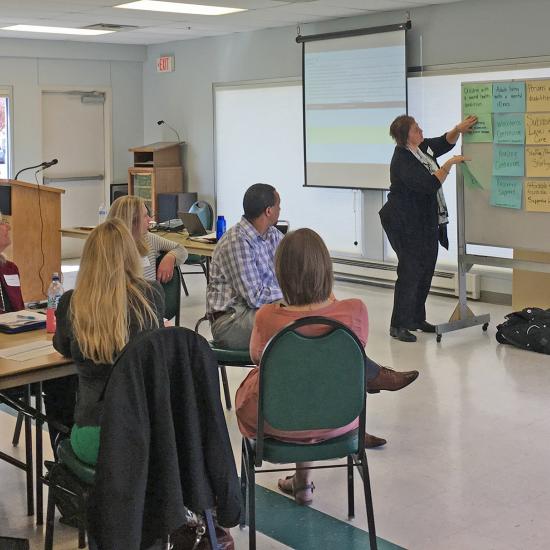Identifying Service Gaps to Improve Lives and Communities: Minnesota Department of Human Services Gaps Analysis
The ultimate goal of any research or evaluation project is to inform action. A multi-year Wilder Research project with the Minnesota Department of Human Services (DHS) is informing systems changes to meet the needs of some of Minnesota’s most vulnerable residents.
Beginning in 2014, DHS contracted with Wilder Research to conduct a legislatively mandated biennial study of gaps in Minnesota’s publicly funded services system, including home and community-based services and mental health services. The goal is to identify how services are meeting needs for people with disabilities, older adults and adults and children living with mental illness, and to understand areas for improvement.
Wilder Research has worked closely with DHS to adapt each study to engage stakeholders in meaningful ways, and gather and share information that would be useful to highlight pressing issues and possible solutions. In the first study, information was gathered via surveys and interviews from county and tribal agencies, managed care organizations, service providers, and people who use services or their advocates about gaps in services in their area. Survey and interview data identified pressing gaps in service availability, important barriers to accessing services, and other systems-level issues related to housing, transportation, employment supports and the cultural responsiveness of services.
Planning Sessions to Prioritize Needs and Create Solutions
In the second study, Wilder Research held planning sessions across the state for regional stakeholders. The goal was to bring together people using and providing services to review data about service use and gaps in their region, prioritize areas of greatest need, and think creatively about strategies for shrinking gaps in critical services. The most common service gap identified as a priority by participants was workforce shortage, which was seen as creating gaps in many services. One participant noted, “Without solving the workforce issue, services cannot be provided.”
The most commonly recommended strategies to address this issue include increasing reimbursement rates and wages for service providers, collaborating with educational institutions to recruit and train service providers, and offering other incentives or benefits (such as loan forgiveness or school credit) for service providers. Participants also prioritized shortages in transportation, crisis services and housing, and identified strategies that could help to alleviate these shortages.
“It has been exciting to work with DHS on multiple cycles of this study and to think collaboratively about how the processes can evolve to better use existing data and stakeholder input to develop and implement actual strategies for solving service gaps,” said Francie Streich, research scientist at Wilder Research who leads the Gaps Analysis.
Building Off the Momentum for Future Studies
The current biennium study will build off of the momentum started in the regional planning sessions. Working with DHS, Wilder Research is charged with identifying and implementing the next steps of the DHS gaps analysis process. These steps will become the basis for an ongoing DHS Gaps Analysis process to identify service gaps; refine, support and evaluate strategies to lessen service gaps; and communicate about these efforts. Once again, the processes developed will involve many important voices, including those of counties, tribes, managed care organizations, service providers, and people who use services.
This project has the potential to impact thousands of Minnesotans who are currently living in the community with the assistance of home and community-based services and mental health services. “The collaboration with Wilder Research has helped to streamline the process while developing broader stakeholder engagement and enthusiasm for this effort,” said Mary Olsen Baker, contract manager, Minnesota Department of Human Services.
